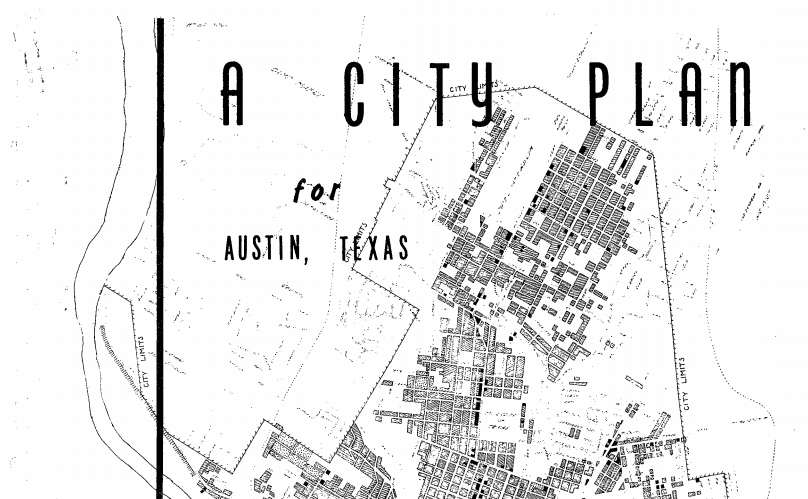Juneteenth: Celebrating resilience in the face of ongoing oppression
Claire Burrus, ECHO Research and Evaluation Analyst
Rhie Azzam Morris, Austin Youth Collective Coordinator
On this day 155 years ago, enslaved Black people in Texas received word of their emancipation from slavery. Freedmen celebrated the first Jubilee Day a year later, saluting their newfound freedom and enduring strength. Today – Juneteenth, Emancipation Day – we recognize the same resilience, even as the promise of true freedom has yet to be fulfilled.
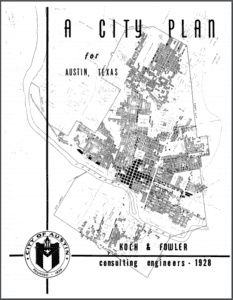
Since 1865, Black people in our community have been intentionally and systematically excluded, oppressed, and disenfranchised. One needs simply to look to the legacy of the Austin Master Plan of 1928 to see the evidence. The plan created a backdoor to legalize segregation in the city, forming a “Negro District” in East Austin to “eliminate the necessity of duplication of white and black schools, white and black parks, and other duplicate facilities for this area.” Austin “relocated” over 10,000 Black folks to the other side of East Ave (now I-35) and forced the move through removing access to city services such as trash and water, achieving full segregation by 1932.
The effects of such historical treatment and the continually upheld structures of white supremacy from the local to the global level have prevented Black people in our community from ever truly accessing the freedom their ancestors were promised 155 years ago. The words of Langston Hughes, written in 1938, continue to be relevant for the Black community in Austin/Travis County in 2020: “There’s never been equality for me, Nor freedom in this ‘homeland of the free.’”
Amid rising awareness of institutionalized white supremacy and its impact on our Black community, it is so important that we take this moment and this day to honor and celebrate the resiliency of Black people in our country. Today is Emancipation Day. A day to celebrate freedom. A day, especially this year, to honor the legacy that has come before in the ongoing fight for freedom as we are navigating a culture that is waking up.
The effects of racism in our homeless response system
Part of the work we are doing in the Austin/Travis County Homeless Response System is increasing education and access to the facts of racial disproportionality in our population experiencing homelessness here in our community.
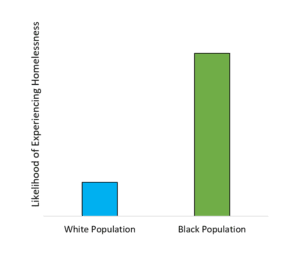 In our Austin/Travis County community, race is a predictor of the likelihood that someone might experience homelessness. The likelihood that any given person of color in Travis County is experiencing homelessness is 1.5 times the likelihood of any given white individual. If the person of color is Black, their likelihood of experiencing homelessness is 4.8 times the likelihood of their white peers.
In our Austin/Travis County community, race is a predictor of the likelihood that someone might experience homelessness. The likelihood that any given person of color in Travis County is experiencing homelessness is 1.5 times the likelihood of any given white individual. If the person of color is Black, their likelihood of experiencing homelessness is 4.8 times the likelihood of their white peers.
What’s more, Black people represent 57% of all people of color identified in the 2020 Point in Time Count of people experiencing homelessness, despite the fact that just 35% of people of color in Travis County are Black. The burden of racial inequity in homelessness outcomes for people of color in Austin/Travis County falls onto the Black population.
There are many hypotheses one might pose as to why homelessness is so disproportionately experienced by Black people in our community. It is undoubtedly a combination of several causal variables that only together can explain the extent to which Black people in Austin/Travis County experience homelessness at such a high frequency.
Factors that contribute to disproportionality
Wealth and housing stability are intimately linked. Wealth provides a level of stability and security that in most cases prevents homelessness. Wealth is comprised of both income and assets; unsurprisingly, this is divided along racial lines in Austin. The Black community in Austin possesses far less wealth per capita than the white community, and as such the community lacks the privilege of such stability and security that accompanies wealth.
Black households in Austin are disproportionately low-income. White Austinites make 119% of Austin’s overall median income. Black Austinites, meanwhile, make 66% of the overall median income. The median Black household makes 55% of the income of the median white household in Austin.
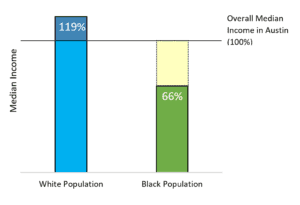
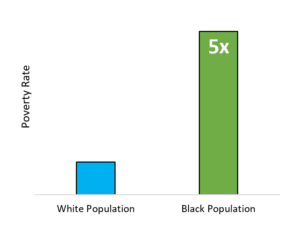
Further, Black households in Austin experience poverty at a higher rate than any other racial group. A Black household in 2016 was five times as likely as a white household to be living below the Federal Poverty Level.
We can look to property value and net worth as measures of the racial asset gap. Black households’ property values are just over half as valuable as white households’ in Austin. White property value averages $320,000, and Black property value averages $170,000. Net worth is a measure calculated by subtracting liabilities (anything owed) from assets (anything owned); Black households in Austin are nearly two times as likely as white households to have zero net worth (34% of Black households compared to 18% of white households). Zero net worth creates difficulties in the ability to secure loans and build capital, and as such, limits the Black community’s ability to build economic security from the ground up.
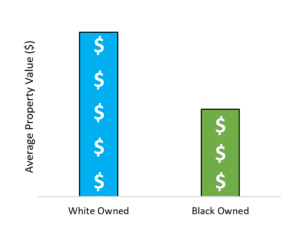
Stats only tell part of the story
All of the above variables are essential in telling the story of Black homelessness and unveiling the root causes of the disproportionality of homelessness for Black people in Austin; however, they don’t tell the full story. The impacts of gentrification, trauma, and systemic racial oppression are harder to measure, but they’re no less important.
A century and a half ago, enslaved Black people in Texas received word of their emancipation from slavery. Today we continue the fight for racial justice on the shoulders of the giants who paved the way, with humility and gratitude as we celebrate resiliency and freedom.
Editor’s Note: An earlier version of this post quoted a different statistic for the percentage of people of color experiencing homelessness who are Black. The original statistic, while not wrong, was misleading because it defined people of color as nonwhite individuals based on HUD’s racial categories. The number has been updated to reflect a more inclusive definition that ECHO feels more accurately describes the demographics of our homeless population.
Sources
- Ending Community Homelessness Coalition. (2020). 2020 PIT Count Results Source Document. https://www.austinecho.org/wp-content/uploads/2020/05/PIT-2020-Source-Document.5.19.2020.pdf
- Hughes, Langston. (1938). Let America Be America Again.
- Phillips, Alberta. (2012). Proof of Austin’s past is right there – in black and white. Austin American Statesman.
- Prosperity Now. (2019). Racial Wealth Divide in Austin. https://www.austincf.org/wp-content/uploads/2020/01/RacialWealthDivide-Profile-Austin.pdf
- Rothstein, R. (2017). The Color of Law: A Forgotten History of How Our Government Segregated America. New York: W.W. Norton & Company, Inc.
- United States Census. (2018). American Community Survey. https://data.census.gov/


